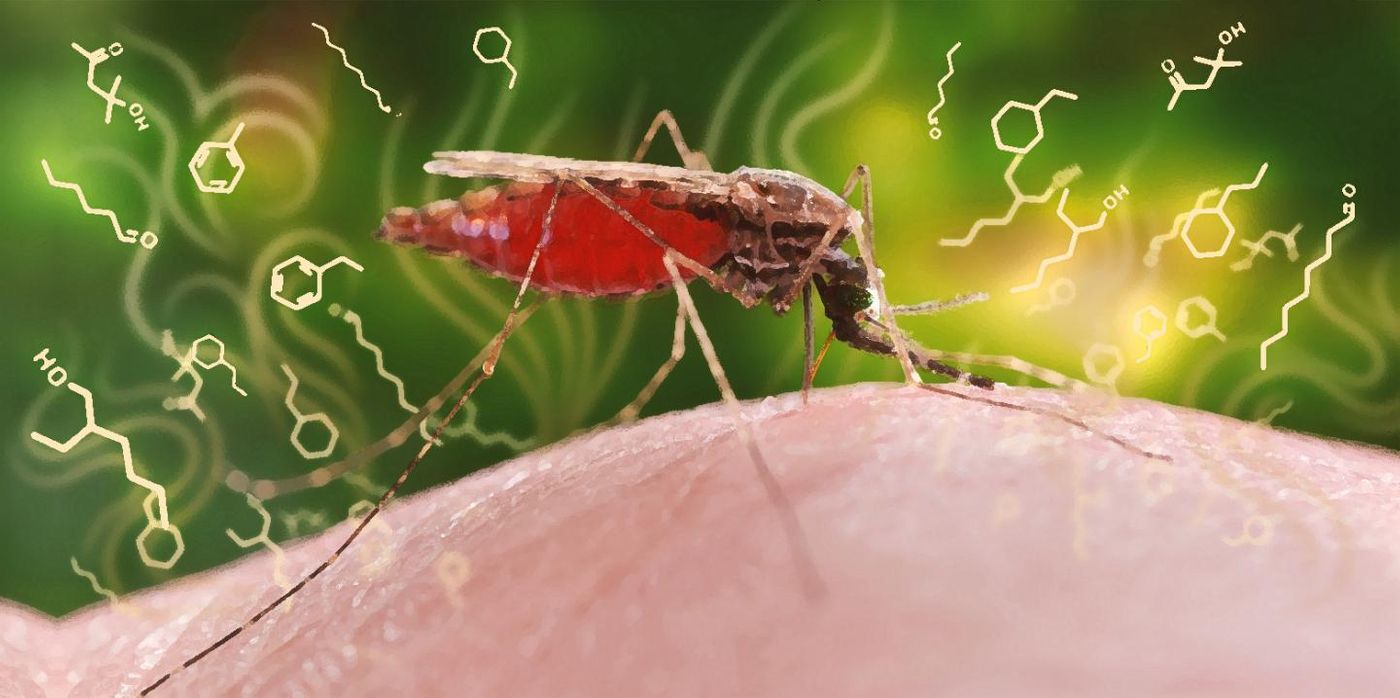Malaria Changes the Way You Smell
Malaria is a lethal disease caused by a parasitic infection. However, some people carry the malaria parasite without ever showing signs of the disease. This is exactly the group of people that ETH Zurich scientists want to target in order to minimize transmission of malaria, and this is exactly the group that is the most difficult to identify.
Mosquitos are the vectors responsible for carrying the malaria-inducing Plasmodium falciparum parasite. Causing flu-like high fevers and shaking chills, the parasite infects red blood cells and produces toxic substances when the cells break open. Infected cells stick to the inside of the blood vessel wall instead of circulating in the blood like normal.
There are drugs to treat malaria and preventative options too, but 200 million people are still affected worldwide every year. Several hundred thousand will die, with an overwhelming majority being children younger than five. Those who survive the parasitic infection still have lifelong health problems associated with the disease.
In a new study, scientists focus on recognizing people infected with malaria when they don’t actually develop disease-related symptoms. From previous research findings, scientists know that a malaria infection triggers changes in odors that attract more mosquito vectors, an intriguing observation undoubtedly the result of an evolutionary drive by the parasite to increase the transmission of the disease.
"Based on our previous work we had reason to hope that similar changes in human odors might provide biomarkers that could be used for diagnosis," explained Consuelo De Moraes.
De Moraes and the research team collected and examined certain volatile substances released from the skin of 400 Kenyan children. How? Researchers placed their limbs into sealed bags while an air current passed over the skin for one hour, channeled through special filters capable of collecting the volatile compounds. Gas chromatography and mass spectrometry helped scientists categorize the compounds to create odor profiles for infected versus healthy children.
"Initially we weren't sure which chemical compounds we should be looking for," De Moraes explained. "The specific signature is not created by the presence or absence of specific compounds, but through a change in the concentrations of compounds that are also present in healthy people. Our task was to filter out the right signals from the extensive background noise."
The researchers were pleasantly surprised by the significant distinction between acute and asymptomatic odor profiles. They successfully detected parasitic infection in nearly 100 percent of all asymptomatic individuals via these unique signatures.
In the future, the scientists hope that these findings will be clinically applied to improving the diagnostic approach to malaria in both acute and asymptomatic patients, transforming the characteristic patterns into diagnostic biomarkers. Additionally, the biomarkers could be used to diagnose malaria at an early stage of the disease, allowing expedited treatment plans.
After this application, all the scientists would need is an affordable and effective way to apply these new diagnostic methods in the field.
The present study was published in the journal Proceedings of the National Academy of the Sciences.
Sources: Centers for Disease Control and Prevention, ETH Zurich









